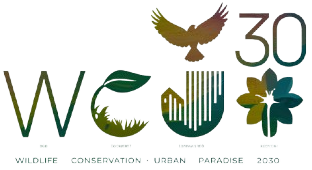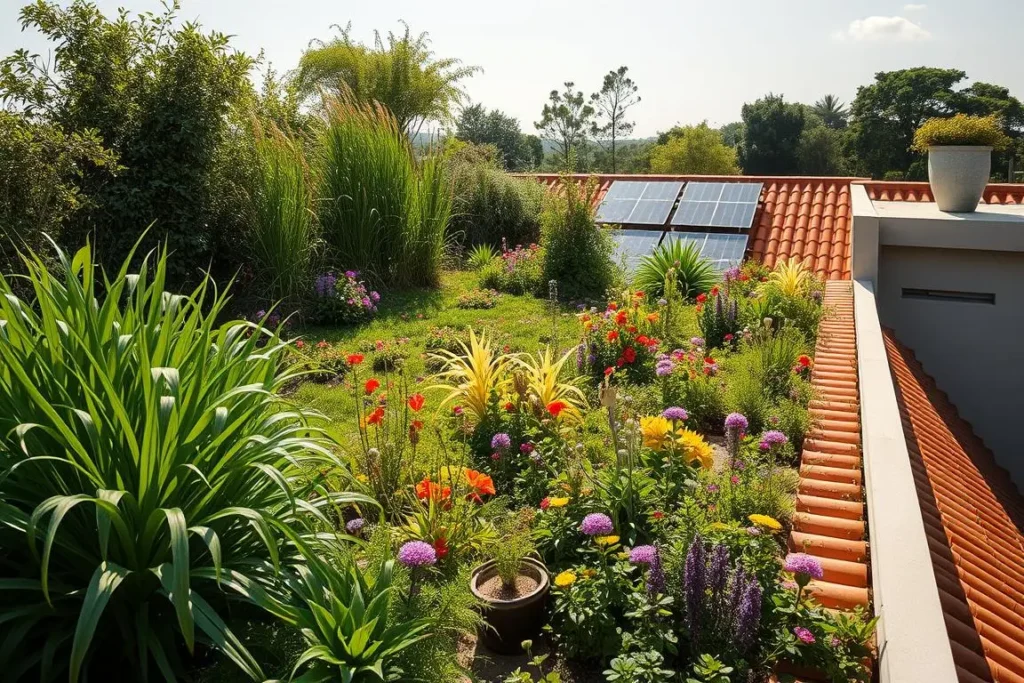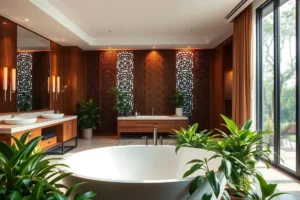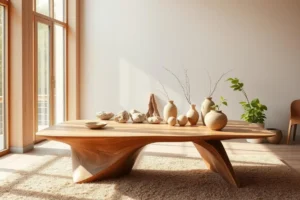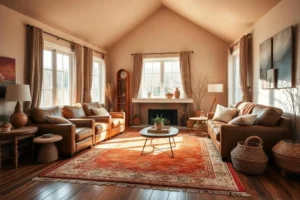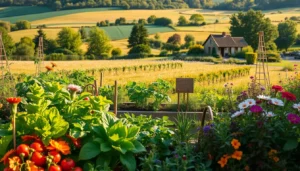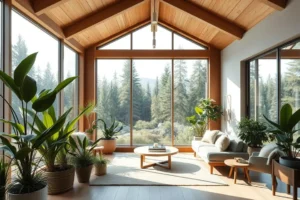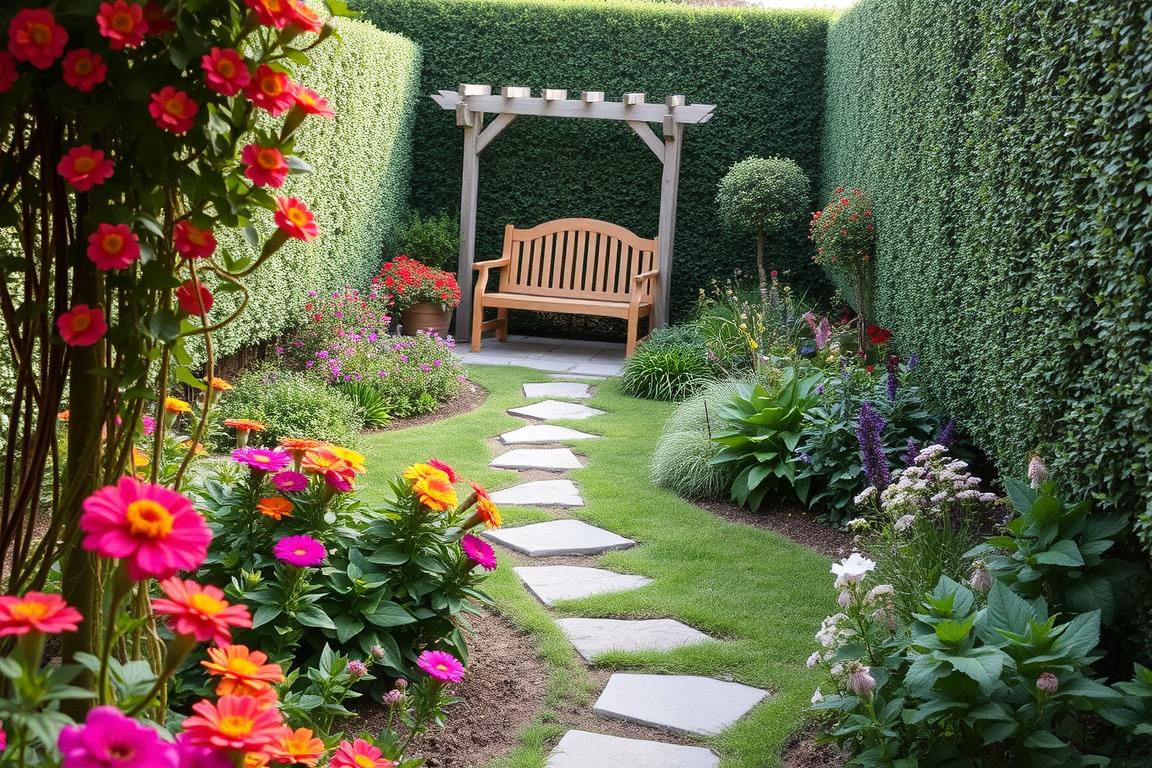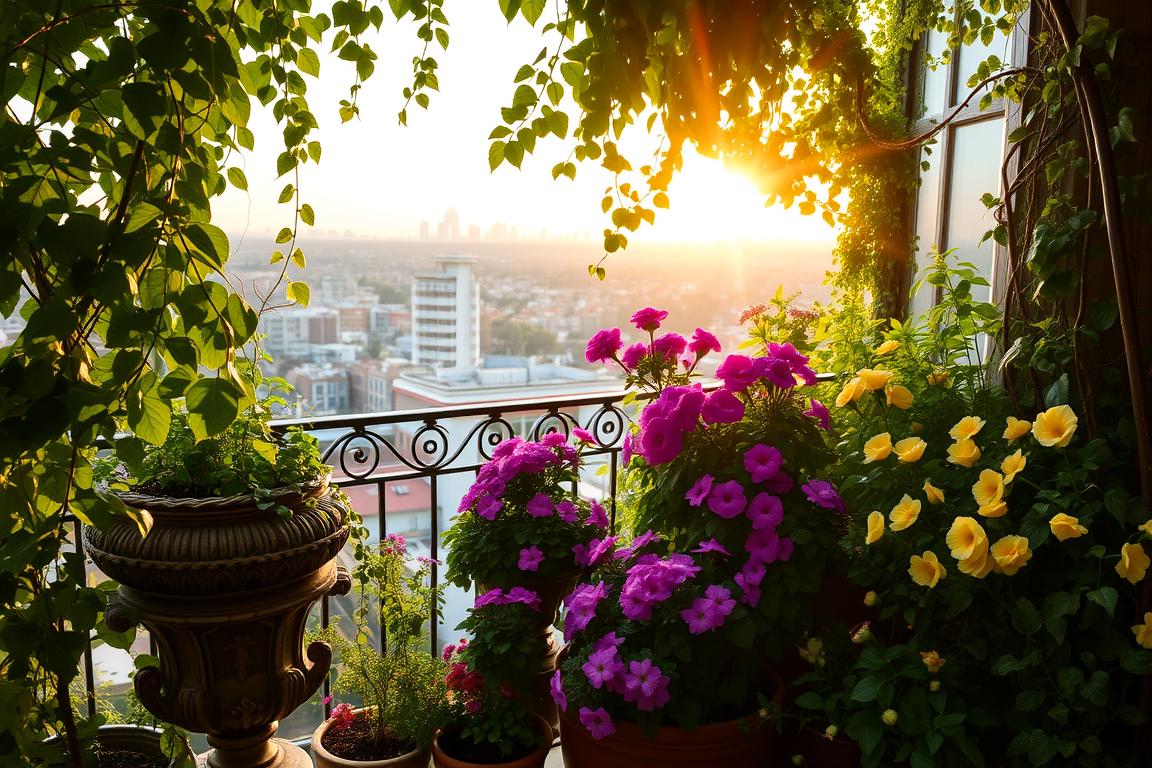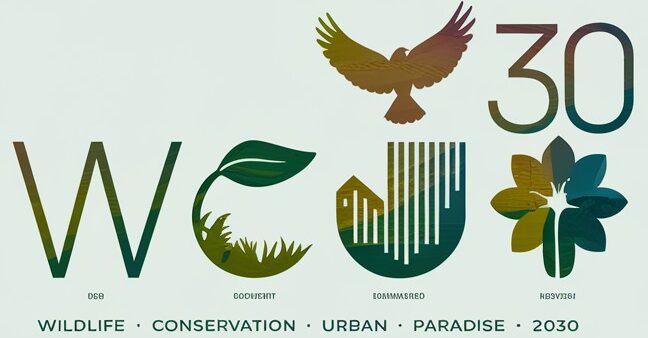Thinking about eco-friendly roofing for your building? A Green Roof Installation Guide is a great help. Green roofs are getting more popular in the U.S. for their sustainability. They help the environment by improving air quality and cooling cities.
A good green roof makes your building look better and helps local wildlife. With a detailed Green Roof Installation Guide, you can have a successful project. It covers everything from planning to choosing the right materials and design.
Table of Contents
ToggleIntroduction to Green Roofs
First, let’s get to know green roofs and their benefits. You’ll learn about the different types and how to pick the right one for your building.
Key Takeaways
- Green roofs offer many environmental benefits, like cooling cities and better air.
- A detailed Green Roof Installation Guide is key for a successful project.
- Choosing the right materials and design is important for a green roof.
- Green roofs can make your building look better and help local wildlife.
- A well-designed green roof can also increase your property value and save on energy costs.
- Remember to check local rules and permits before starting your green roof project.
Introduction to Green Roofs
Thinking about sustainable roof design options? You might wonder what a green roof is and its benefits. A green roof has plants on it, which helps save energy and improves air quality.
Green roofs are key in green building practices. They work on many buildings, from homes to tall skyscrapers. The perks include:
- Less energy use
- Better air quality
- More wildlife
- Longer roof life
Next, we’ll explore the different green roof systems and their parts. Knowing the benefits and choices helps decide if a green roof fits your building. It also guides how to add sustainable roof design and green building practices to your project.
Planning Your Green Roof Installation
Planning a green roof is key to a successful rooftop garden. You need to check your building’s structure, design the roof, and get the right permits. This way, you’ll have a green roof that’s good for the planet and fun to use.
Think about your climate, soil, and plants when planning. This helps you pick the best plants for your roof. Proper planning makes sure your roof looks good and works well.
First, check if your building can handle the green roof’s weight. Look at the roof’s condition, drainage, and how much it can hold. This ensures your roof lasts long and is good for the environment.
- Assess your building’s structure and load-bearing capacity
- Design your green roof, considering climate, soil type, and plant selection
- Obtain necessary permits and approvals for your rooftop garden installation
By following these steps, you can make a green roof that’s great for your building and the planet. It can improve air quality, cut down on stormwater, and save energy. With good planning, your green roof will add value and beauty to your property.
Materials Needed for Green Roofs
Choosing the right materials is key for a successful green roof. You’ll enjoy benefits like better energy use and less stormwater runoff. Start by picking the right growing medium, plants, waterproofing, and drainage solutions.
A good growing medium is vital for plant growth and preventing soil loss. It should hold moisture but also drain well. With the right medium, your roof can become a lush ecosystem.
- Soil or soilless growing medium
- Plants suitable for your climate and roof conditions
- Waterproofing membrane to prevent leaks
- Drainage layers to manage stormwater runoff
By picking these materials carefully, you can make a green roof that’s both beautiful and useful. It will improve air quality and help cool the city.
Step-by-Step Green Roof Installation Process
Starting your green roof journey is exciting. It’s key to follow a clear plan for a lasting eco-friendly roof. This guide will help you through each step.
First, prepare your roof. Check for damage and fix any issues. This is vital to handle the green roof’s weight.
Then, put in the waterproof membrane. It stops water from getting into your building. Next, add layers for drainage to keep water flowing.
- Prepare the roof structure by inspecting for damage and making repairs
- Install the waterproof membrane to prevent water penetration
- Add drainage layers to ensure excess water can flow freely
Lastly, add the growing medium. This is where your plants will live. It’s the final step to see your green roof grow. By following these steps, you’ll create a green roof that’s good for your building and the planet.
Planting on Your Green Roof
When you start planting on your green roof, think about green building practices and environmentally friendly roofing. These help make a sustainable and healthy ecosystem. Your aim is to make a rooftop garden that looks good and helps the environment.
To get there, pick the right plants for your area and roof type. Think about sunlight, wind, and rain, and the soil and drainage you have. Choosing plants that fit your local climate means less upkeep and a green roof that supports local wildlife.
- Choosing plants that are drought-tolerant and can thrive in shallow soil
- Selecting plants that provide a range of benefits, such as insulation, stormwater management, and habitat creation
- Using a combination of plant species to create a diverse and resilient ecosystem
By following these tips and using environmentally friendly roofing practices, you can make a stunning and green roof. It will support both the environment and your community.
Maintaining Your Green Roof
Keeping your green roof in top shape is key to enjoying its green roof benefits. By following green roof construction tips and regular maintenance, your roof will last longer. This way, you can fully appreciate the benefits of a well-designed green roof.
For your green roof to stay in good condition, regular checks and maintenance are a must. This includes inspecting the waterproof layer, drainage system, and the health of the plants. Also, don’t forget to consider seasonal needs, like winterizing and summer care, to protect your roof from harsh weather.
- Regularly inspecting the roof for damage or wear
- Pruning plants to maintain shape and promote healthy growth
- Monitoring irrigation systems to prevent overwatering
By sticking to these maintenance tips, you can enjoy the green roof benefits without worrying about expensive repairs.
Environmental Impact and Benefits
Thinking about a green roof? It’s good to know how it helps the planet. Eco-friendly roofs, like sustainable designs, cut down on the urban heat island effect. This happens when cities get hotter because of built-up areas.
By adding plants to your roof, you make it cooler. This makes your living space more comfortable.
Green roofs also improve the air we breathe. Plants take in carbon dioxide and give out oxygen. This makes the air cleaner, which is great for cities with lots of pollution.
They also help by reducing stormwater runoff. This runoff can pollute waterways and harm nature. So, sustainable roofs are good for both the air and water.
- Reduced energy consumption: Green roofs can provide insulation, reducing the need for heating and cooling.
- Improved air quality: Plants absorb pollutants and release oxygen, improving air quality.
- Increased biodiversity: Green roofs can provide habitats for plants and animals, supporting local ecosystems.
Choosing eco-friendly roofing options is a step towards a greener future. It helps lessen our impact on the environment.
Challenges and Considerations
When you start using green building practices, like environmentally friendly roofing, you face some challenges. You’ll need to watch out for common mistakes, structural issues, and weather problems. These can affect how well your project does.
Common Installation Mistakes
Some big mistakes to avoid are bad waterproofing, not enough drainage, and picking the wrong plants. These errors can cause expensive fixes, upkeep troubles, and shorten your green roof’s life. Knowing these risks helps you avoid them and set up your roof for success.
Potential Structural Challenges
Green roofs can be heavy, so check if your building’s structure can handle it. Look at the roof’s strength, check for damage, and fix any problems. This makes sure your green roof is safe and can grow well.
Knowing these challenges helps you make smart choices. You can then use green building practices, like eco-friendly roofing, that are good for your building and the planet.
Case Studies and Success Stories
Thinking about a green roof? It’s smart to look at successful ones. In the U.S., many green roofs have cut energy use and improved air. These examples offer great green roof construction tips and ways to tackle problems.
Looking at green roof success stories shows the value of good planning and care. Here are some examples:
- The Chicago City Hall green roof is a top example of urban green space.
- The Ford Motor Company’s roof in Dearborn, Michigan, shows off smart green roof construction tips.
- The California Academy of Sciences’ roof in San Francisco is full of different plants and shows big green roof benefits.
These roofs show how green roofs can help, from lessening stormwater to supporting local animals. By learning from these successes, you can make a green roof that’s good for the planet and your community.
Cost Considerations
Thinking about the cost is key when you want a green roof. Eco-friendly roofing options need a budget check. A good sustainable roof design saves energy and lasts longer.
The price of a green roof changes based on roof size, plant type, and materials. But, a well-planned green roof can pay off in the long run. Key costs include:
- Initial installation costs
- Materials and maintenance costs
- Energy savings and possible rebates
There are ways to lower the upfront costs. Grants, loans, and tax breaks are available. Choosing a sustainable roof design means saving money and the planet.
Eco-Friendly Practices for Green Roofs
Thinking about a green roof? It’s key to consider eco-friendly practices. Using green building practices and environmentally friendly roofing materials helps. This way, you lessen the roof’s environmental impact.
Choose sustainable materials for the roof’s structure and drainage. Also, use water conservation techniques like rainwater harvesting. This cuts down potable water use for irrigation.
Sustainable Materials and Design
Design your green roof with sustainable materials in mind. Sedum or native plants need less care. Adding solar panels or wind turbines can also help.
Energy Efficiency Benefits
Using environmentally friendly roofing materials and design can save energy. This includes insulation, reflective materials, and energy-efficient systems. For example, green roof systems with solar panels.
Future Trends in Green Roof Technology
Thinking about a green roof? It’s key to know the latest in green roof tech. New systems offer better benefits and tips for building. Keeping up with these changes means your roof will look great and help the planet.
Innovations in Green Roof Systems
New materials like sustainable membranes and recycled growing medium are changing green roofs. They make roofs better at keeping water out, draining, and keeping warm. Also, new ways to build and install are coming, making it cheaper and easier.
The Role of Green Roofs in Urban Planning
Green roofs are key in city planning. They help cities stay cool, clean the air, and support wildlife. When planning your roof, think about how it can help your community. It can cut energy use and boost property values.
Conclusion and Next Steps
Eco-friendly roofing through sustainable roof design offers many benefits. It improves energy efficiency and supports urban biodiversity. Green roofs are a versatile and innovative solution for modern buildings.
Now, you know what it takes to have a successful green roof project. Start by checking your building’s structure and local rules. This ensures your green roof fits and follows the law. Talk to green roof experts to create a system that meets your needs and climate.
With careful planning, you can turn your rooftop into a thriving oasis. This oasis will help make the future more sustainable. Check out the extra resources to learn about financing, case studies, and new green roof tech. Start your green roof project today and join the movement towards eco-friendly roofing.
FAQ
What is a green roof?
A green roof is a roof covered with plants. It sits on a waterproof layer. It helps lower energy use, improves air, and boosts biodiversity.
What are the benefits of installing a green roof?
Green roofs cool cities, manage stormwater, and save energy. They also last longer and support wildlife. Plus, they clean the air and cut down on pollution.
What types of green roof systems are available?
There are two main types. Extensive roofs have a thin layer for easy plants. Intensive roofs are deeper for more plants, like trees.
How do I assess my building’s structure for a green roof installation?
Check if your building can handle the extra weight. Look at the roof’s strength and any current issues. A structural engineer might be needed for this.
What type of growing medium should I use for my green roof?
Choose a mix that drains well and is rich in nutrients. Options include soil, engineered media, or a mix. The right mix depends on your roof type, plants, and climate.
How do I select the right plants for my green roof?
Pick plants that fit your climate and sunlight. Go for plants that need little care and are native. They’ll thrive and help local wildlife.
What are the key steps in the green roof installation process?
The steps are: 1. Prepare the roof. 2. Put on the waterproof layer. 3. Add drainage. 4. Spread the growing medium. 5. Plant the greenery. 6. Keep it up with maintenance.
How do I maintain my green roof after installation?
Regularly check, weed, water, and fertilize. Watch for pests and damage. Good care keeps your roof healthy and thriving.
What are the potentially challenges and considerations for a green roof installation?
Challenges include roof weight, leaks, and picking the right plants. Maintenance is key, and follow local rules.
How can I finance a green roof project?
Look into grants, tax breaks, and loans. Governments and green groups offer funding. Talk to experts to find the best way to fund your project.
